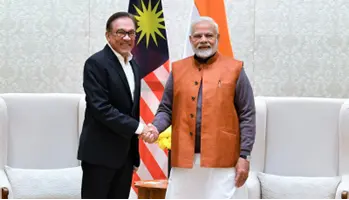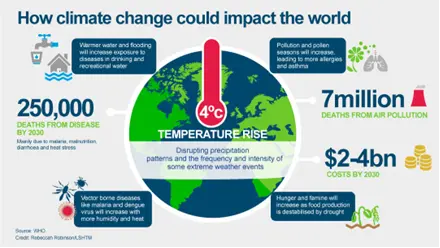Tuesday, 20th August 2024
Rollout of new regimen for drug-resistant TB
Why in the news?
- India is preparing to implement the new BPaLM regimen for drug-resistant tuberculosis (TB) by training healthcare professionals for its administration.

About Tuberculosis (TB)
- Description:
- Tuberculosis (TB) is a bacterial infection transmitted through droplets from the coughs or sneezes of an infected person.
- It primarily targets the lungs but can affect other body parts such as the abdomen, glands, bones, and nervous system.
- TB is a serious but treatable condition if managed with appropriate antibiotics.
- Symptoms: Symptoms include persistent cough, chest pain, fever, night sweats, and weight loss.
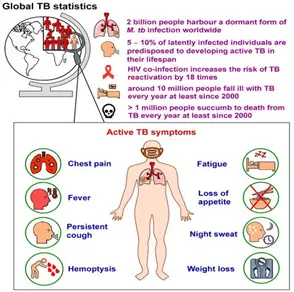
Types of TB:
- Pulmonary TB:
- Affects the lungs and is the most contagious form, spreading mainly through prolonged exposure. Healthy individuals often contain the bacteria without showing symptoms.
- Latent TB:
- The immune system prevents the spread of TB bacteria, resulting in no symptoms. Individuals with latent TB are not infectious.
- Active TB:
- Occurs when the immune system fails to contain the infection, leading to symptoms and potential spread within the body.
- Approximately 5-15% of those infected with TB bacteria develop active TB, and latent TB can progress to active TB if the immune system weakens.
Treatment:
- Standard Course: TB is treated with a 6-month regimen of 4 antimicrobial drugs, supported by health workers or trained volunteers.
- Drug Resistance: Anti-TB medicines have been in use for decades, with resistance to one or more drugs identified globally.
- Multidrug-Resistant TB (MDR-TB): Caused by bacteria resistant to isoniazid and rifampicin, MDR-TB can be treated with second-line drugs like Bedaquiline.
- Extensively Drug-Resistant TB (XDR-TB): A severe form of MDR-TB resistant to most second-line drugs, often leaving patients with limited treatment options.
Tuberculosis in India:
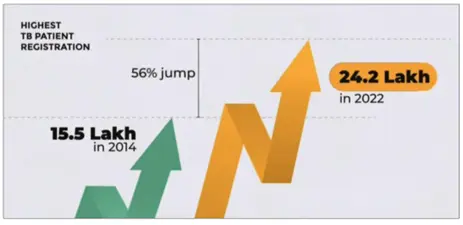
- TB Incidence Data:
- In 2021, India reported 19.33 lakh new and relapse TB cases, an increase from 16.28 lakh in 2020.
- The number of TB cases in 2022 rose to 24.22 lakh.
- Global Burden:
- India continues to bear the largest share of the global TB burden.
- National TB Elimination Programme:
- The programme aims to eliminate TB by 2025, ahead of the Sustainable Development Goals (SDG) target for 2030.
- The National Strategic Plan for Tuberculosis Elimination (2017-2025) was established to achieve this goal.
- By 2020, it was evident that the initial plan would not meet its objectives, leading to the launch of a revised plan (2020-2025).
Challenges Associated with TB Eradication in India:
- Healthcare System Issues:
- Poor primary health care and infrastructure in rural areas.
- Unregulated private healthcare sector.
- Socioeconomic Factors:
- HIV-induced TB cases.
- Lack of hygiene, widespread malnutrition, and poverty.
- Transmission Variables:
- Rapid unplanned urbanisation and overcrowding.
- Poor airborne infection control, inadequate nutrition, HIV, diabetes, and tobacco use.
Rollout of New Regimen for Drug-resistant TB:
- Introduction:
- India is set to implement the new BPaLM regimen for drug-resistant TB, as recommended by the World Health Organization nearly two years ago.
- The regimen aims to improve treatment outcomes and quality of life for TB patients through a training program for healthcare professionals.
- Current Availability:
- The BPaLM regimen is already in use in nearly 40 countries and has demonstrated higher effectiveness.
- Training Program:
- Training for the new regimen will begin in late August or early September in Mumbai and will expand to five other locations across the country.
About the BPaLM Regimen:
- Treatment Composition:
- The BPaLM regimen is a six-month oral treatment combining bedaquiline (B), pretomanid (Pa), linezolid (L), and sometimes moxifloxacin (M).
- Recommended Use:
- Suitable for MDR/RR-TB and pre-XDR-TB but not for extrapulmonary TB involving the central nervous system or osteoarticular and disseminated TB.
Benefits:
- Shorter Duration:
- The regimen lasts six months compared to the 18 months required for standard care.
- Lower Cost:
- The BPaLM regimen is less expensive than traditional treatments.
- Lower Pill Burden:
- It involves fewer pills than standard care.
- High Efficacy:
- Success rate of 89% within six months, compared to 52% for standard care.
What are Different Initiatives to Combat TB?
- Global Efforts:
- The WHO (World Health Organisation) has launched a joint initiative “Find. Treat. All. #EndTB” with the Global Fund and Stop TB Partnership.
- WHO also releases the Global Tuberculosis Report.
- India’s Efforts:
- Pradhan Mantri TB Mukt Bharat Abhiyan.
- National Strategic Plan (NSP) for Tuberculosis Elimination (2017-2025)
- TB Harega Desh Jeetega Campaign.
- Nikshay Poshan Yojna.
Source: IE
A change in India’s power export rules
Why in the news?
- India has recently amended its power export rules to address political risks in Bangladesh.
- The amendment permits Indian power exporters to redirect their electricity to Indian grids if payment delays occur from partner countries.
- Despite this, Adani Power, which supplies all its power from its Godda plant to Bangladesh, confirmed that the amendment will not affect its existing contract and remains committed to supplying electricity to Bangladesh.
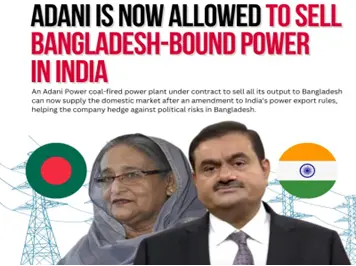
Godda Project:
- About:
- The Godda plant is India's first transnational power project, dedicated solely to exporting electricity to another country.
- Adani Power’s subsidiary in Jharkhand supplies 1,496 megawatts of power to Bangladesh from its ultra super-critical thermal power plant in Godda.
- This supply is part of a 25-year Power Purchase Agreement (PPA) with the Bangladesh Power Development Board (BPDB), established in November 2017.
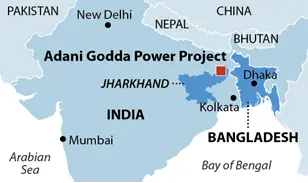
- Significance:
- Adani Power asserts that the electricity supplied from Godda benefits Bangladesh by replacing costly liquid fuel-based power, thus lowering the overall cost of electricity in the country.
- According to BPDB's 2022-23 report, as of June 2023, Bangladesh's total installed generation capacity was 24,911 MW, with over 10% (2,656 MW) imported from India.
- This includes 1,496 MW from the Godda plant, contributing approximately 6% of the total.
- India's Ministry of Power emphasised in its 2016 guidelines that electricity exchange across South Asia would promote economic growth and enhance the quality of life for participating nations.
- Criticism:
- Criticisms have emerged regarding the use of coal imported from Australia's Carmichael mine for generating power in India for export to Bangladesh.
- Reports indicate that the PPA between Adani Power and Bangladesh allowed Adani Power to pass on the high costs of coal importation and transportation, as well as cross-border transmission costs, to Bangladesh.
- In February 2023, United News of Bangladesh reported that BPDB requested a revision of the PPA, citing that the $400/MT coal price quoted by Adani Power was excessively high compared to the less than $250/MT for coal at other thermal plants.
- Concerns were also raised about high capacity and maintenance charges imposed by Adani Power, deemed excessive by industry standards, even when no electricity was generated.
Bangladesh's Need for Power Imports:
- Bangladesh’s dependence on power imports arises from the underutilization of its power plants.
- Despite significant progress in expanding electricity access, particularly in rural areas, the country faces fuel and gas supply constraints, leading to underutilised power generation capacity.
- The situation worsened following the global energy crisis after Russia's actions in Ukraine, prompting Bangladesh to seek support from the International Monetary Fund (IMF) in July 2022.
- Severe blackouts, lasting up to 13 hours a day, occurred due to difficulties in sourcing sufficient diesel and gas to meet demand.
- Activists in Bangladesh highlight the issue of overcapacity in the power sector, with a total power generation capacity of 28,098 MW as of June 30, 2023, but the highest recorded generation was only 16,477 MW, leaving an unutilized capacity of about 11,621 MW.
Change in India’s Power Export Rules:
- The recent regulatory change in India’s power export rules allows greater flexibility for power exporters by enabling them to access the domestic market.
- This change aims to reduce reliance on external markets and mitigate risks from instability or economic challenges in neighbouring countries.
- Delays in payments have been common due to an internal vetting process within BPDB, which involves evaluating coal prices and other expenses before finalising payments.
- Experts suggest that even if the power supply from India were abruptly halted, the effects on Bangladesh would be temporary, lasting only 2 to 3 days, without significant long-term impacts.
Source: TH
National Film Awards 2024
Why in the news?
- Recently, the winners of the 70th National Film Awards were awarded the Golden Lotus Awards (Swarna Kamal), a certificate, and a cash prize.
- On August 16, The President of India presented the awards at a ceremony held in New Delhi.

About the National Film Awards:
- Prestigious Recognition: The National Film Awards are the most prestigious awards in Indian cinema, presented annually to honour outstanding filmmaking talent across the country.
- Objective: According to the Directorate of Film Festivals, Ministry of Information and Broadcasting, the awards aim to "encourage the production of films that demonstrate aesthetic and technical excellence and possess social relevance."
- Establishment: The National Film Awards were first introduced in 1954 and were initially known as the State Awards.
- Early Focus: In the initial years, the awards recognized only the best films in different regional languages.
- Expansion in 1967: In 1967, the scope of the awards expanded to include recognition for actors and technicians.
- First Recipients: Nargis was the first actor to receive the Best Actress award for her performance in "Raat Aur Din," while Uttam Kumar won the Best Actor award for his roles in "Antony Firingee" and "Chiriyakhana" in the same year.
List of 70th National Film Awards 2024 winners:
Feature Film Awards:
|
Award |
Film |
Language |
Awardee(s) |
Cash Prize |
|
Best Feature Film |
Aattam |
Malayalam |
Production: Joy Movie Productions LLP Director: Anand Ekarshi |
₹300,000 each |
|
Best Debut Film |
Fouja |
Haryanvi |
Director: Pramod Kumar |
₹300,000 |
|
Best Popular Film Providing Wholesome Entertainment |
Kantara |
Kannada |
Production: Hombale Films Director: Rishab Shetty |
₹300,000 each |
|
Best Feature Film Promoting National, Social, and Environmental Values |
Kutch Express |
Gujarati |
Production: Soul Sutra LLP Direction: Viral Shah |
₹200,000 each |
|
Best Film in AVGC |
Brahmāstra: Part One - Shiva |
Hindi |
Production: Dharma Productions, Prime Focus, Starlight Pictures Director: Ayan Mukherji, VFX Supervisor: Jaykar Arudra, Viral Thakkar, Neelesh Gore |
₹300,000 each, ₹200,000 each |
|
Best Direction |
Uunchai |
Hindi |
Sooraj R. Barjatya |
₹300,000 |
|
Best Actor |
Kantara |
Kannada |
Rishab Shetty |
₹200,000 |
|
Best Actress |
Thiruchitrambalam / Kutch Express |
Tamil / Gujarati |
Nithya Menen / Manasi Parekh |
₹250,000 each |
|
Best Supporting Actor |
Fouja |
Haryanvi |
Pavan Malhotra |
₹200,000 |
|
Best Supporting Actress |
Uunchai |
Hindi |
Neena Gupta |
₹200,000 |
Language-Specific Feature Film Awards:
|
Award |
Film |
Language |
|
Best Telugu Film |
Karthikeya 2 |
Telugu |
|
Best Tamil Film |
Ponniyin Selvan – Part 1 |
Tamil |
|
Best Punjabi Film |
Baaghi Di Dhee |
Punjabi |
|
Best Odia Film |
Daman |
Odia |
|
Best Malayalam Film |
Saudi Velakka |
Malayalam |
|
Best Marathi Film |
Vaalvi |
Marathi |
|
Best Kannada Film |
KGF: Chapter 2 |
Kannada |
|
Best Hindi Film |
Gulmohar |
Hindi |
|
Best Tiwa Film |
Sikaisal |
Tiwa |
|
Best Bengali Film |
Kaberi Antardhan |
Bengali |
|
Best Assamese Film |
Emuthi Puthi |
Assamese |
Special Mentions:
|
Award |
Awardee(s) |
|
Special Mentions |
Manoj Bajpayee in Gulmohar, Sanjoy Salil Chowdhury for Kalikhan |
Technical Awards:
|
Award |
Film |
Awardee(s) |
|
Best Action Direction |
KGF: Chapter 2 |
|
|
Best Choreography |
Tiruchitrabalam |
|
|
Best Lyrics |
Fouja |
|
|
Best Music Director |
|
Pritam (Songs), AR Rahman (Background Score) |
|
Best Makeup |
Aparajito |
|
|
Best Costumes |
Kutch Express |
|
|
Best Production Design |
Aparajito |
|
|
Best Editing |
Aattam |
|
|
Best Sound Design |
Ponniyin Selvan – Part 1 |
|
|
Best Screenplay |
Aattam |
|
|
Best Dialogues |
Gulmohar |
|
|
Best Cinematography |
Ponniyin Selvan – Part 1 |
|
|
Best Female Playback |
Saudi Velakka |
Bombay Jayashri |
|
Best Male Playback |
Brahmastra |
Arijit Singh |
|
Best Child Artist |
Mallikappuram |
Sreepath |
Source: IE
Fundamental Principles and Rights at Work (FPRW) Project
Why in the news?
- The Confederation of Indian Textile Industry (CITI) and the International Labour Organisation (ILO) have launched the Fundamental Principles and Rights at Work (FPRW) project to raise awareness and share best practices in labour standards.
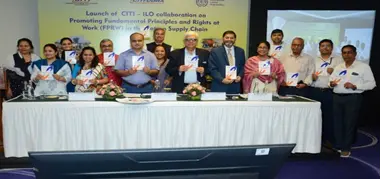
About FPRW Project:
- Commitment: Governments, employers, and workers pledge to uphold essential human values vital for social and economic life.
- History: The ILO Declaration on FPRW was adopted in 1998 and amended in 2022 to include five categories of labour standards.
Five Categories and Related Conventions:
- Freedom of Association and Collective Bargaining: Workers and employers can form and manage organisations without external interference. Enforced by:
- Freedom of Association and Protection of the Right to Organise Convention (No. 87), 1948
- Right to Organise and Collective Bargaining Convention (No. 98), 1949
- Elimination of Forced or Compulsory Labour: Workers must be free to join or leave employment with reasonable notice. Enforced by:
- Forced Labour Convention (No. 29), 1930
- Abolition of Forced Labour Convention (No. 105), 1957
- Effective Abolition of Child Labour: Sets minimum age requirements for work to ensure it is above compulsory schooling age. Enforced by:
- Minimum Age Convention (No. 138), 1973
- Worst Forms of Child Labour Convention (No. 182), 1999
- Elimination of Discrimination: Prohibits exclusion or preference based on race, sex, religion, etc., and mandates equal pay for equal work. Enforced by:
- Equal Remuneration Convention (No. 100), 1951
- Discrimination (Employment and Occupation) Convention (No. 111), 1958
- Safe and Healthy Working Environment: Aims to prevent workplace accidents and improve safety standards. Enforced by:
- Occupational Safety and Health Convention (No. 155), 1981
- Promotional Framework for Occupational Safety and Health Convention (No. 187), 2006
Need for FPRW in India:
- Trade Barrier: Cotton and hybrid cotton seeds from India are listed by the US Labor Department for child or forced labour. FPRW will help address this issue.
- Global Obligation: The FPRW project applies to all ILO members and is part of the ILO Constitution. India's compliance is necessary.
- Sustainable Workforce: Fostering better practices in cotton-growing communities benefits workers and families.
- Socio-Economic Upliftment: The project supports farmers with knowledge about government schemes, vocational training, and aligns with SDGs like Reduced Inequalities (SDG 10) and Decent Work and Economic Growth (SDG 8).
Status of Child Labour in India:
- Census Data (2011): There were 10.1 million child labourers in India.
- NCRB Report (2022): In 2021, around 982 cases were registered under the Child Labour (Prohibition and Regulation) Act, 1986, with the highest number in Telangana, followed by Assam.
Initiatives to Curb Child Labour:
- Child Labour (Prohibition and Regulation) Act, 1986: Prohibits employment of children under 14 and adolescents under 18 in hazardous occupations.
- Factories Act, 1948: Bans employment of children under 14 in hazardous environments; restricts working hours and conditions for adolescents (14-18) to non-hazardous processes.
- National Policy on Child Labour, 1987: Aims to eradicate child labour through prohibition, regulation, welfare programs, and ensuring education and rehabilitation for working children.
- Pencil Portal: Launched by the Ministry of Labour and Employment, this platform engages various stakeholders in eradicating child labour.
- ILO Conventions: India ratified the Minimum Age Convention (No. 138, 1973) and Worst Forms of Child Labour Convention (No. 182, 1999) in 2017.
Way Forward:
- Integrated Pest Management (IPM): Promote IPM strategies that use natural controls, trap crops, and beneficial insects to reduce pesticide use and manage pest populations effectively.
- Product Enhancement: Encourage value addition by establishing local cotton processing units for ginning, cleaning, and processing, creating jobs and increasing the cotton supply chain’s value.
- Industry Modernisation: Leverage initiatives like the Technology Upgradation Fund Scheme (TUFS) and PM Mega Textile Parks (PM-MITRA) to modernise ginning, spinning, and weaving facilities, enhancing efficiency and global competitiveness.
|
UPSC Civil Services Examination, Previous Year Question (PYQ) Prelims: Q:1 Tamil Nadu is a leading producer of mill-made cotton yarn in the country. What could be the reason? (2010)
Which of the above is/are the correct reasons?
Ans: (b)
Q:2 The black cotton soil of India has been formed due to the weathering of (2021)
Ans: (b)
Q:3 A state in India has the following characteristics:(2011)
Which one of the following states has all of the above characteristics?
Ans: (b) Mains: Q:1 Analyse the factors for the highly decentralised cotton textile industry in India. (2013) |
Revised Guidelines for Foster Care
Why in the news?
- The Union Ministry of Women and Child Development (MWCD) has recently introduced the revised Model Foster Care Guidelines 2024, which now permit single individuals to foster.
- Subsequently adopt a child after a minimum of two years, removing the previous restriction that limited foster care to married couples.
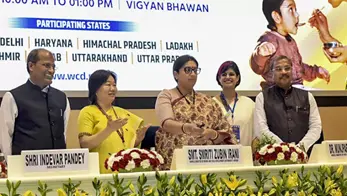
What is Foster Care?
- Foster care is an arrangement where a child temporarily lives with either extended family members or unrelated individuals. In India:
- Eligibility for Foster Care: Children above six years residing in childcare institutions with “unfit guardians” and minors categorised as “hard to place” or with special needs can be fostered.
Model Guidelines for Foster Care 2016:
- Purpose: The 2016 guidelines, established by MWCD, outline procedures, roles, and responsibilities for implementing the foster care program.
- Child Eligibility: Children aged 6-18 years whose parents are unable to care for them due to reasons such as mental illness, poverty, or imprisonment, and those in childcare institutions, are eligible for foster care.
- Adoption Encouragement: Children aged 0-6 years are encouraged for adoption under the Regulations Governing Adoption of Children, 2017, rather than foster care.
Need to Revise the Foster Care Guidelines 2016:
- Amendments: The guidelines were updated to align with:
- The Juvenile Justice (Care and Protection of Children) Act 2021.
- The Juvenile Justice (Care and Protection of Children) Model Rules 2022.
- Reason for Revision: Single individuals were permitted to adopt but not to foster under the previous guidelines.
Key Changes Introduced by the Revised Guidelines for Foster Care:
- Eligibility for Fostering:
- Open to individuals regardless of marital status (single, unmarried, widow, divorcee, legally separated) and whether they have biological children.
- Single women can foster and adopt children of any gender, while single men can only foster male children.
- Adoption Timeline:
- Foster parents may adopt after a minimum of two years in foster care, reduced from five years.
- Guidelines for Married Couples:
- Couples must have a stable marital relationship of at least two years before being considered for fostering, a new requirement does not present in the previous guidelines.
- Age Requirements:

-
- The revised guidelines provide specific age requirements for foster parents, whereas the 2016 guidelines were less detailed.
- Registration Process:
- Foster parents can now register online via the Child Adoption Resource Information and Guidance System (CARINGS), used by prospective adoptive parents.
Implications of the Revised Guidelines for Foster Care
- Increased Participation: The revisions may encourage more individuals to apply for foster care.
- Current Data: As of March 2024, 1,653 children were in foster care across various states and UTs (excluding Goa, Haryana, and Lakshadweep).
- Clarity on Temporary Care: The guidelines clarify that foster care is intended to be temporary until the child’s biological family can resume care.
- Impact on Adoption: The changes may also boost child adoption rates. Between September 2022 and July 2024, 23 children in foster care were adopted by families after two years of care.
Source: BS
National Coal Index (NCI)
Why in the news?
- Recently, The National Coal Index (NCI) has shown a significant decline of 3.48 percent in June 2024 at 142.13 points on a provisional basis compared to 147.25 points in June 2023.
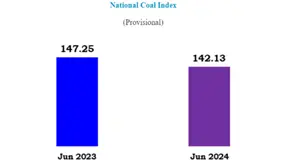
National Coal Index (NCI):
- Purpose: The NCI measures the change in coal prices for a given month relative to a fixed base year.
- Components: It includes Notified Prices, Auction Prices, and Import Prices.
- Launch Date: June 4, 2020.
- Design and Development: Created by the Indian Statistical Institute, Kolkata.
- Release: Monthly by the Ministry of Coal.
- Base Year: FY 2017-18.
- Coverage: Includes all transactions of raw coal, including coking and non-coking grades in both regulated (power and fertiliser) and non-regulated sectors. Excludes washed coal and coal products.
- Implications:
- Upward Movement: Signals increased coal demand, encouraging producers to boost domestic production.
- Downward Movement: Reflects a balanced market, aligning supply with demand.
Source: TH
Gross Environment Product Index
Why in the news?
- Recently, Uttarakhand has become the first Indian state to introduce a Gross Environment Product Index (GEPI), which measures not only the services derived from the environment but also what is contributed back to it.
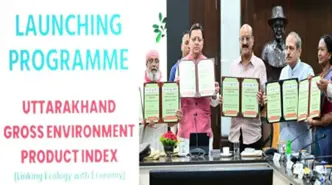
About the Gross Environment Product (GEP):
- Understanding (GEP):
- About: GEP is an assessment system designed to measure the ecological status of a region. It is one of the components of green GDP.
- Purpose: GEP is considered the value of products and services that ecosystems provide for human welfare, including economic and socially sustainable development.
- Significance of GEP:
- Novelty: GEP is unique as it assesses and assigns value to the benefits ecosystems provide.
- Service Benefits: These benefits include provisioning services like food, water, and timber; regulating services such as climate regulation and flood control; supporting services like soil formation and nutrient cycling; and cultural services such as recreation and spirituality.
- Monetary Value of Services: By converting these diverse contributions into a single monetary value, GEP reflects the true worth of natural capital in sustaining economic and social well-being.
- Ecosystem Services Represented in GEP:
- GEP accounts for the benefits derived from ecosystems, including forests, lakes, grasslands, timber, carbon sequestration, nutrient cycling, soil formation, productivity, and tourism.
- Comparison with GDP: In some cases, the value of GEP can exceed that of GDP. For example, in 2000, Qinghai's (China) GEP was greater than its GDP and was three-fourths as large as GDP in 2015.
- Environmental Constituents: GEP includes four main environmental constituents directly impacted by development activities: air and water quality, the number of trees planted annually, and the measure of organic soil area.
- GEP Index Formula: The GEP Index is calculated using the following formula:
- GEP Index = Air-GEP index + Water-GEP index + Soil-GEP index + Forest-GEP index.
Advantages of Gross Environment Product (GEP):
- Quantitative Indicator: GEP can be used as a quantitative indicator for evaluating officials' performance and for auditing post-office activities.
- Impact Assessment: GEP helps assess the impact of human activities on ecosystems and natural resources.
- Eco Compensation and Revenue-Sharing: GEP can serve as a scientific basis for Eco Compensation and public financial transfers. For example, the Finance Commission's revenue-sharing formula between the Union and states includes forest cover as a determining factor in a state's share.
- Measuring Progress: GEP can measure the status of ecosystem services, making it a crucial indicator of sustainable development and progress towards Eco Civilization.
- Universal Measure: GEP is a universal measure of ecological status and can be applied across countries, regions, and ecosystem types.
- Establishing Harmony: Releasing GEP alongside GDP in the state will foster better harmony between ecological and economic factors.
- Awareness: The GEP index would also raise awareness of the environment, helping to assess contributions to environmental protection.
Need for GEP in Uttarakhand:
- State's Potential:
- Uttarakhand, with over 71% of its area under forests, provides ecological services worth Rs. 95,112 crores per year to the nation.
- For example, the state's forests generate Rs. 300 crores worth of employment, Rs. 3,395.2 crores worth of fuelwood, Rs. 1,243.2 crores worth of timber and save Rs. 1,306.5 crores by preventing floods.
- Himalayan Contribution:
- The Himalayas contribute significantly to the sustainability of the Gangetic Plains, home to 500 million people.
- Wildlife and Natural Resources:
- Uttarakhand is home to the Himalayas, wildlife reserves such as Corbett National Park and Rajaji Tiger Reserves, and is the origin of several rivers, including the Ganga, Yamuna, and Sharada.
Source: AIR
RISE Accelerator
Why in the news?
- Recently, The Atal Innovation Mission - in partnership with CSIRO, Australia - is inviting applications from start-ups and MSMEs from India and Australia for the Climate Smart Agritech cohort of India Australia.
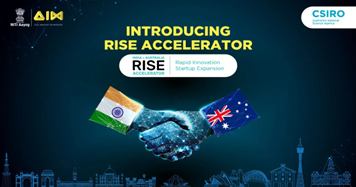
RISE Accelerator: Climate Smart Agritech Cohort
About:
- Initiative: The Atal Innovation Mission (AIM), in collaboration with CSIRO, Australia, is inviting applications from start-ups and MSMEs in India and Australia for the Climate Smart Agritech cohort under the RISE Accelerator program.
- Launch Date: August 19, 2024.
- Objective: The initiative aims to support innovative agritech solutions addressing shared climate and environmental challenges between India and Australia.
About RISE Accelerator:
- Program Name: India Australia Rapid Innovation and Start-up Expansion (RISE) Accelerator.
- Leadership: A bilateral program led by CSIRO and AIM, NITI Aayog.
- Focus Areas: The program addresses shared challenges in environment and climate issues by facilitating the expansion of agritech innovations across borders.
- Launch Year: 2023.
- Significance: The RISE Accelerator has played a pivotal role in helping start-ups and MSMEs validate, adapt, and pilot their technologies for new markets.
Program Highlights:
- Target Audience: Start-ups and MSMEs in India and Australia.
- Primary Focus: Climate Smart Agritech solutions that enhance agricultural productivity and resilience amid climate variability, resource scarcity, and food insecurity.
- Farmer-Centric Approach: Solutions that prioritise farmer needs, practices, and priorities are of particular interest.
- Program Duration: Nine months.
Program Structure:
- Learning Format: A combination of self-paced online learning and in-person sessions.
- Immersion Weeks: Participants will undergo immersion weeks in both India and Australia.
- Field Trials and Pilots: The latter half of the program will involve field trials and technology pilots to test and refine solutions.
Source: PIB
Guam Island
Why in the news?
- INS Shivalik arrived at Guam for an Operational Turnaround after participating in RIMPAC 2024, the world's largest Multinational Maritime Exercise.
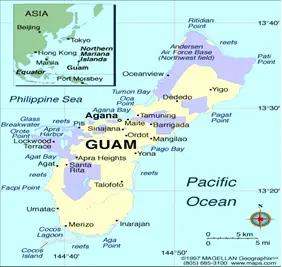
About Guam Island:
- Geographical Location: Guam is the largest, most populous, and southernmost island of the Mariana Islands in the Northern Pacific Ocean.
- Political Status: It is a territory of the United States of America.
- Historical Background: Originally a Spanish colony until 1898, Guam became a US territory following the Spanish-American War.
- Climate: Guam enjoys a tropical climate, moderated by northeast trade winds and the north equatorial ocean current that flows west across the Pacific.
- Population: The native inhabitants, known as Guamanians or Chamorros, are primarily of Malayo-Indonesian descent with significant influences from Spanish, Filipino, Mexican, and other European and Asian ancestries.
- Capital: The capital city is Hagåtña.
About the INS Shivalik
About:
- Designation: INS Shivalik is the first stealth multi-role frigate constructed for the Indian Navy.
- Construction: It was built at Mazagon Dock Limited (MDL) in Mumbai.
- Commissioning Date: INS Shivalik was commissioned into the Indian Navy on April 29, 2010.
Features:
- Maximum Speed: The frigate can reach speeds of up to 32 knots (59 km/h).
- Stealth and Attack Capabilities: It boasts enhanced stealth and land-attack features compared to the preceding Talwar-class frigates.
- Propulsion System: INS Shivalik is the first Indian Navy ship to utilise the Combined Diesel or Gas (CODOG) propulsion system.
- Armament: The ship is outfitted with a mix of Russian, Indian, and Western weapon systems, making it a versatile asset in the Indian Navy’s fleet.
Source: TH
Mental Healthcare in India
Why in the news?
- Recently, the National Medical Commission established a Task Force to tackle the mental health and wellbeing issues among medical students following the suicide of 122 students over the past five years.
- The Commission revealed that 27.8% of undergraduate medical students experience mental health issues, while 31.3% of postgraduate students have reported having suicidal thoughts.
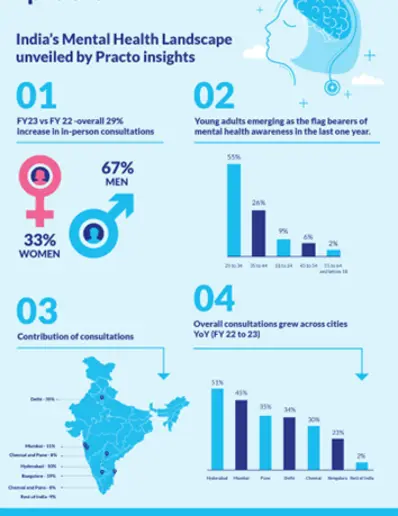
Understanding Mental Health:
- Definition:
- According to the World Health Organization (WHO), mental health is defined as a state of mental well-being that allows individuals to manage life’s stresses, realise their capabilities, perform well academically and professionally, and contribute positively to their community.
- Characteristics of Good Mental Health:
- Emotional stability
- Resilience
- High self-esteem
- Effective stress management
- Positive relationships
- Balanced life perspective
- Mental Health Conditions:
- Mental health conditions encompass mental disorders, psychosocial disabilities, and other mental states that cause significant distress, functional impairment, or self-harm risk.
Common Types of Mental Disorders:
- Anxiety Disorders:
- As of 2019, approximately 301 million individuals worldwide were affected, including 58 million children and adolescents.
- Depression:
- Characterised by persistent sadness, hopelessness, and disinterest in activities.
- In 2019, about 280 million people, including 23 million children and adolescents, were living with depression.
- Bipolar Disorder:
- Depressive episodes may include persistent sadness or disinterest, while manic episodes feature elevated mood, increased energy, talkativeness, racing thoughts, and impulsive behaviour.
- Post-Traumatic Stress Disorder (PTSD):
- Occurs following exposure to a traumatic event, characterised by persistent flashbacks, nightmares, and heightened arousal.
- Schizophrenia:
- A severe mental disorder marked by distorted thinking, perceptions, and emotions, often leading to a disconnect from reality.
- Affects approximately 24 million people globally, or 1 in 300 individuals.
- Eating Disorders:
- Includes conditions like anorexia nervosa and bulimia nervosa, characterised by abnormal eating patterns and preoccupation with food, body weight, and shape.
- Disruptive Behaviour and Dissocial Disorders:
- Involves persistent behavioural problems such as defiance, disobedience, and violations of societal norms and laws.
- Neurodevelopmental Disorders:
- Behavioural and cognitive disorders emerging during the developmental period, impacting intellectual, motor, language, or social functions.
- Includes intellectual developmental disorders, autism spectrum disorder, and attention deficit hyperactivity disorder (ADHD).
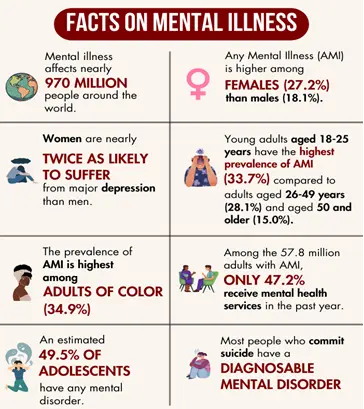
Prevalence of Mental Health Disorders in India:
- National Mental Health Survey (2015-16):
- A comprehensive study by NIMHANS revealed that approximately 13.7% of India’s general population suffers from various mental illnesses, with 10.6% requiring immediate intervention.
- Suicide Rates:
- According to the National Crime Records Bureau (NCRB), 171,000 people died by suicide in 2022, with the suicide rate rising to 12.4 per 100,000 individuals.
- Depressive Disorders:
- The WHO estimates that around 56 million people in India suffer from depression and 38 million from anxiety disorders, highlighting a severe mental health crisis in the country.
Key Challenges Faced by the Mental Healthcare System in India:
- Low Policy Priority:
- Despite an estimated need exceeding Rs 93,000 crore for mental health, the government allocated only Rs 600 crore in 2019 and Rs 1,000 crore in the latest budget, with most funds directed to tertiary institutions.
- Inadequate Mental Health Infrastructure:
- India faces a severe shortage in mental health infrastructure, with only 0.75 psychiatrists per 100,000 people, compared to the recommended minimum of over 3 per 100,000.
- High Treatment Costs:
- The National Mental Health Survey (NMHS) reported an 83% treatment gap for mental disorders, with 20% of households falling into poverty due to spending on mental health treatments.
- Challenges in Policy Implementation:
- The National Mental Health Policy of 2014 and the Mental Health Act of 2017 aimed to prioritise mental health but lack clarity on implementation, resource allocation, and timelines.
- Urban-Rural Divide:
- Mental health services are predominantly concentrated in urban areas, leaving rural populations with limited or no access to care, exacerbating the mental health crisis in these regions.
- Stigma and Discrimination:
- Mental health issues are often stigmatised, leading to social discrimination that discourages individuals from seeking help and exacerbates their conditions.
- Lack of Awareness and Education:
- There is a significant lack of awareness about mental health, leading to misconceptions and neglect. Educational initiatives to promote mental health literacy are insufficient.
Government Initiatives to Improve Mental Health:
- National Mental Health Programme (NMHP): Aimed at improving mental health services and support across the country.
- Mental HealthCare Act 2017: Legislation intended to protect the rights of individuals with mental health conditions and improve care.
- National Institute of Mental Health and Neurosciences (NIMHANS): A premier institution dedicated to mental health research and treatment.
- National Tele Mental Health Programme: Provides mental health support through telemedicine platforms.
- NIMHANS and iGOT-Diksha Collaboration: An initiative for training healthcare professionals in mental health.
- Ayushman Bharat – HWC Scheme: Integrates mental health services into primary healthcare under the Ayushman Bharat scheme.
- Kiran Helpline: A helpline offering mental health support and crisis intervention.
- MANAS Mobile App: A digital platform for mental health services and resources.
Way Forward to Improve Mental Healthcare in India:
- Increase Funding for Mental Health:
- Currently, the mental health budget is approximately 1% of the total health budget, which is inadequate given the significant needs.
- Expand Facilities:
- Develop additional mental health facilities, including community health centres and emergency care units. Enhance access through mobile health units and telemedicine, particularly in rural areas.
- Support Economic Stability:
- Promote employment guarantee programs such as the Mahatma Gandhi National Rural Employment Guarantee Scheme (MGNREGS) to provide financial stability.
- Ensure Effective Implementation of Policies and Acts:
- Improve the implementation of mental health policies and establish robust systems for data collection and analysis to inform policy decisions and resource allocation.
- Training and Capacity Building:
- Provide specialised training for primary care doctors, nurses, and community health workers on mental health.
- Increase the number of mental health professionals through educational programs and incentives.
- Learning from HIV-AIDS Initiatives:
- Apply successful strategies from the HIV-AIDS response, including evidence-based interventions, community involvement, and stakeholder participation, to mental health.
- Collaboration and Partnerships:
- Collaborate with NGOs, healthcare providers, and community organisations to expand mental health services.
- Organisations like Banyan, Sangath, and the Centre for Mental Health Law and Policy have made significant contributions.
- Promote Awareness and Recognition:
- Implement policies to improve mental health recognition and awareness, including campaigns and training programs to reduce stigma and encourage early intervention.
Conclusion
Enhancing mental healthcare in India requires prioritising mental health through increased funding, integrating services into primary care, and leveraging technology to broaden access. While the recent task force addressing medical student mental health is a positive step, more comprehensive measures are essential to uphold the right to health and advance Sustainable Development Goal 3 on ‘good health and well-being’.
|
UPSC Civil Services Examination, Previous Year Questions (PYQs) Prelims Q1. Which of the following can be said to be essentially the parts of ‘Inclusive Governance’? (2012)
Select the correct answer using the codes given below:
Ans: C
Mains Q:1 In order to enhance the prospects of social development, sound and adequate health care policies are needed particularly in the fields of geriatric and maternal health care. Discuss. (2020) |
Source: IE
Share the article
Edukemy’s Current Affairs Quiz is published with multiple choice questions for UPSC exams
MCQ
Get Latest Updates on Offers, Event dates, and free Mentorship sessions.

Get in touch with our Expert Academic Counsellors 👋
FAQs
UPSC Daily Current Affairs focuses on learning current events on a daily basis. An aspirant needs to study regular and updated information about current events, news, and relevant topics that are important for UPSC aspirants. It covers national and international affairs, government policies, socio-economic issues, science and technology advancements, and more.
UPSC Daily Current Affairs provides aspirants with a concise and comprehensive overview of the latest happenings and developments across various fields. It helps aspirants stay updated with current affairs and provides them with valuable insights and analysis, which are essential for answering questions in the UPSC examinations. It enhances their knowledge, analytical skills, and ability to connect current affairs with the UPSC syllabus.
UPSC Daily Current Affairs covers a wide range of topics, including politics, economics, science and technology, environment, social issues, governance, international relations, and more. It offers news summaries, in-depth analyses, editorials, opinion pieces, and relevant study materials. It also provides practice questions and quizzes to help aspirants test their understanding of current affairs.
Edukemy's UPSC Daily Current Affairs can be accessed through:
- UPSC Daily Current Affairs can be accessed through Current Affairs tab at the top of the Main Page of Edukemy.
- Edukemy Mobile app: The Daily Current Affairs can also be access through Edukemy Mobile App.
- Social media: Follow Edukemy’s official social media accounts or pages that provide UPSC Daily Current Affairs updates, including Facebook, Twitter, or Telegram channels.

